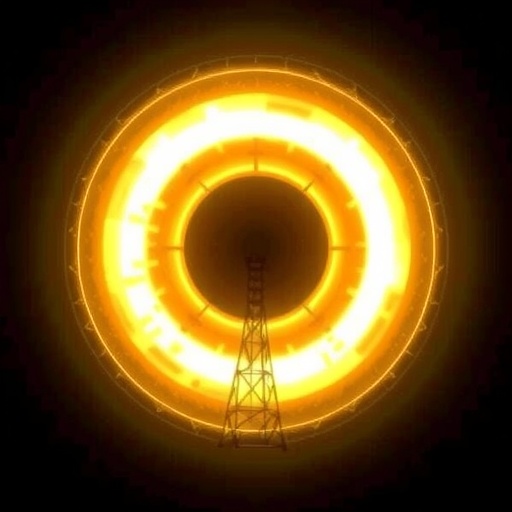The pandemic has reshaped numerous facets of society, extending its influence far beyond health and safety. One notable change that has emerged is the increased prevalence of remote work, particularly among professionals such as radiologists. This shift has introduced a host of environmental considerations worth exploring. As we adapt to new working paradigms, the relationship between telecommuting in the radiology field and greenhouse gas emissions has come under scrutiny. In a groundbreaking commentary, Harned (2025) discusses these ongoing effects, compellingly linking the rise of remote work with potential shifts in our climate.
Historically, the radiology profession has operated within the confines of medical facilities. Radiologists have traditionally analyzed images, communicated findings, and made critical decisions in team-oriented environments. However, as the pandemic prompted lockdowns and social distancing, many radiologists transitioned to remote settings. Enabling this transition were advancements in technology, which allowed for high-resolution image transfers and secure, robust communication systems. This newfound flexibility not only maintained patient care but also led to significant changes in professional workflows and, consequently, lifestyle patterns.
Despite the advantages of remote work, the implications for greenhouse gas emissions are complex. On the one hand, fewer professionals commuting to medical facilities might suggest a decline in transportation-related emissions. However, the potential impact of increased energy usage at home cannot be overlooked. Residential energy consumption can vary widely based on several factors, including the kind of heating, cooling, and lighting systems used in a household. If radiologists are using more electricity to run computers, monitors, and networking equipment at home, the cumulative effect might counterbalance the emissions saved from reduced commuting.
Moreover, Harned emphasizes the need to consider the healthcare industry’s overall carbon footprint. With the continuous integration of technology into medical practices, energy usage in healthcare settings is evolving. While the immediate reliance on remote work may lead to some emissions savings, it prompts questions about the long-term sustainability of this model. Healthcare settings contribute substantially to greenhouse gas emissions, owing to their reliance on medical imaging, diagnostics, and treatment protocols that all require energy-intensive operations.
In examining these implications, it becomes apparent that healthcare professionals, including radiologists, must be equipped with a framework to assess their environmental impact effectively. This involves a broader understanding of how their working arrangements influence energy consumption and, consequently, greenhouse gas emissions. The role of telecommuting in radiology can be a double-edged sword; while it offers greater flexibility and potential lifestyle benefits, it also necessitates a more nuanced evaluation of environmental effects.
Sustainability experts advocate for conscious energy consumption practices among those in remote work. Radiologists and their organizations are encouraged to integrate energy-efficient technologies and habits into their routines. This includes promoting the use of energy-efficient appliances, sustainable office equipment, and robust telecommunication infrastructure, which all contribute to minimizing the environmental impact of remote work. Furthermore, organizations can develop policies aimed at reducing carbon footprints, such as offering support for adopting renewable energy sources in homes or encouraging energy conservation initiatives.
Public awareness is also a pivotal component of addressing the environmental implications of remote work in radiology. Conversations surrounding climate change and sustainable practices need to encompass the realities of modern work environments, urging professionals to engage in dialogues about their collective impact. As healthcare workers, radiologists can play a crucial role in advocating for carbon-conscious practices, both among their peers and within the broader community.
The pandemic has illuminated the need for adaptability, not only in our professional roles but also in our responsibility to the environment. Radiologists, as integral players in the healthcare system, have the potential to influence both patient care and larger environmental practices through individual choices. Incorporating sustainability into their everyday operations could foster a culture of responsibility that extends far beyond imaging sciences, positively affecting the climate on a more systemic level.
As we continue to grapple with the long-term effects of the pandemic, understanding the interplay between remote work and environmental sustainability remains vital. Harned’s commentary raises critical questions about the future of healthcare employment. Will the sector embrace this opportunity to transition to more sustainable methods, or will it revert to old patterns that may exacerbate the climate crisis? Radiology, among many fields, finds itself at a pivotal intersection of technology, healthcare delivery, and environmental responsibility.
In conclusion, as we analyze the ongoing effects of remote work on greenhouse gas production, we must maintain a balanced perspective. Radiologists working from home offer insights into how occupational shifts can bring about environmental consequences, both positive and negative. Collectively, embracing sustainable practices and advocating for energy-efficient solutions will empower healthcare professionals to reduce their carbon footprint in the long run.
This discourse, while focusing on the radiology profession, invites interdisciplinary exploration on how varied fields can collaborate for a greener future. Ultimately, as the world slowly returns to a semblance of normalcy beyond the pandemic, integrating environmental sustainability into daily work practices must become a priority. The journey toward a healthier planet thus relies on each individual’s commitment to nurturing sustainable habits, irrespective of their professional domain.
Subject of Research: The environmental impact of telecommuting for radiologists during the pandemic and its implications for greenhouse gas production.
Article Title: Ongoing effects of a pandemic-related increase in radiologists working from home on greenhouse gas production
Article References:
Harned, R. Commentary: Ongoing effects of a pandemic-related increase in radiologists working from home on greenhouse gas production.
Pediatr Radiol (2025). https://doi.org/10.1007/s00247-025-06446-5
Image Credits: AI Generated
DOI: https://doi.org/10.1007/s00247-025-06446-5
Keywords: Radiology, remote work, greenhouse gas emissions, sustainability, energy consumption, pandemic impact.




